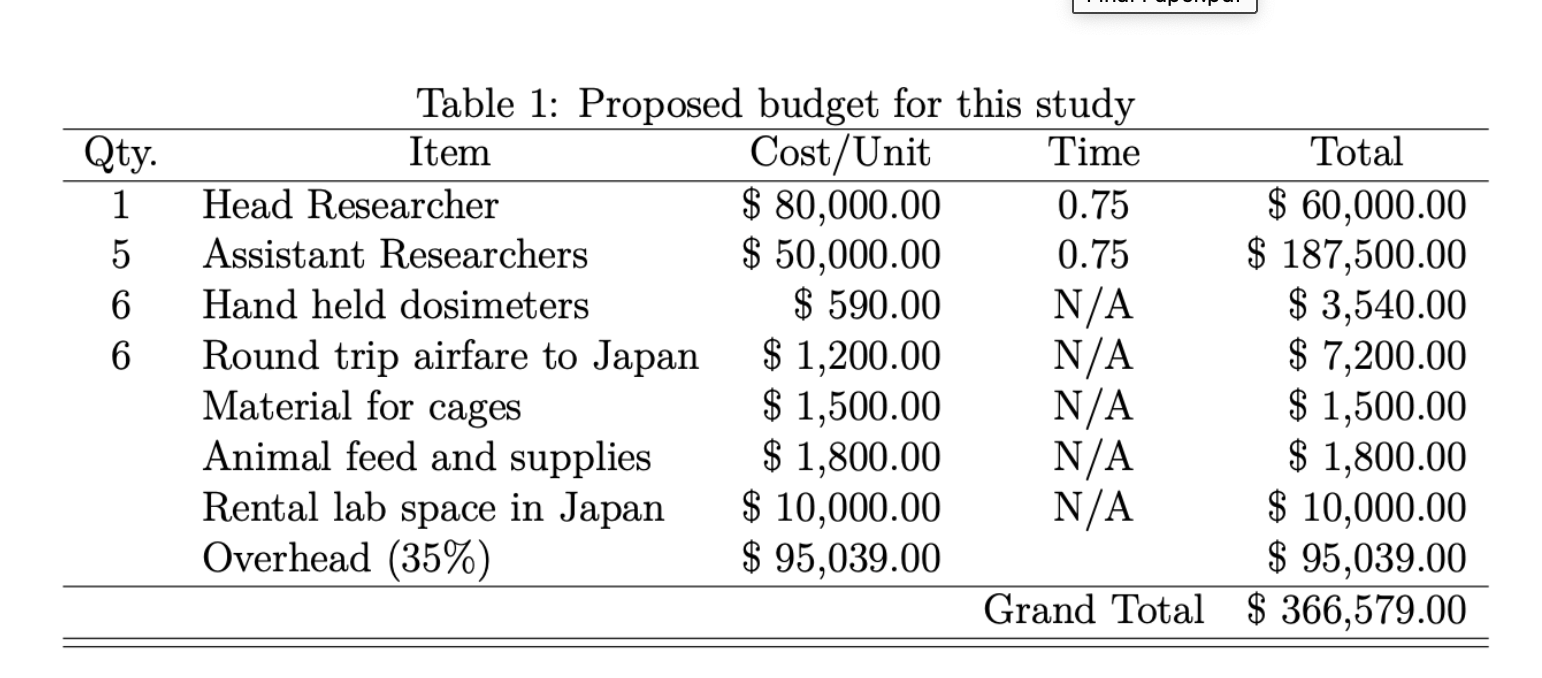Autism was only first described in the 1930’s, and for a long time, the incidence rate remained low, about 1 in 2,500-10,000 children (Deth et al. 2008; Geier 2010). It was only in the late 1980’s that rates began to increase, and those increases have not been explained away by changes in diagnostic criteria, or other changes in disease characterization (Blaxill 2004; Hertz-Picciotto and Delwiche 2009; King and Bearman 2009). The difference between 1 in 2,500 and 1 in 88 is an increase of more than twenty-eight times, and even though that figure includes changes from diagnostic criteria, that is an astronomical increase, one that is apparent anecdotally as well as from the numbers. Just as cancer was once an uncommon, taboo disease and now is pervasive and represented in fashion icons, pink ribbons and St. Balderick’s chic, so now nearly everyone knows a family with an autistic child. In 2008, Autism Speaks launched a campaign with Toni Braxton at the center, the shocking statistics of autism its centerpiece: “Odds of having 3 multi-platinum albums: 1/1,650,000; Odds of having a child with autism: 1/88.” At the first publication of the ad, Autism Speaks said this of its campaign: “The 1 in 150 statistic is a powerful one on its own. Our goal was to couch that startling statistic in a story that pulls a viewer in so that when those odds are revealed, we have his or her full attention” (Autism Speaks 2008). Of course, now the statistic includes nearly twice as many children, and the odds are even worse for boys: 1 in 54 (Baron-Cohen et al. 2011). Public service campaigns, as wonderful as they are at raising consciousness, cannot keep up with the acceleration of the disease and have not addressed causes adequately, leaving the general public with little idea how to protect their unborn children.
Mercury has long been known to be neurotoxic; the link between pesticides and other environmental chemicals and autism is more recent, but increasingly a stronger correlation than mercury, particularly with organophosphate or organochlorine pesticides (Roberts 2007; Landrigan 2010; Schwartzer 2013). It is early days for considering mechanisms by which these chemicals change a fetus’s brain, but the best guess right now is that the chemicals affect either detoxification systems (Woodward et al. 2001), the ways by which the body naturally clears itself of toxins, or the signaling systems neurons use to talk to each other (Stamou et al. 2013), or both. Organophosphate pesticides have long been known to be toxic to the nervous system. Indeed, they were developed during the World Wars precisely for that purpose: they were initially meant to be used as weaponized nerve gas. It must have seemed pretty handy that they could be retrofitted as pesticides; certainly, the companies involved would have wished to continue making money from processes they already had set up. Because they were developed as weapons, these substances were never tested for safety. Rachel Carson showed long ago how really toxic pesticides like DDT were, yet the use of these chemicals has only gone up by volume. In the most recent year for which there is data, 2001, 73 million pounds of organophosphate pesticides were used, in the United States alone (Kiely et al. 2004). That’s about a quarter pound of this one type of chemical for every man, woman, and child in the country. Yet people are sensitive to very low levels. Organophosphate pesticides have been found in the blood and urine of nearly every child tested in the U.S. (Barr et al. 2005), which, as with so many of our synthetic chemicals, makes a control group impossible. This information is publicly available through the CDC Biomonitoring Project online. Everyone should read the executive summary.
In young rats, even at levels that do not cause the typical symptoms, most notably difficulty breathing, organophosphate pesticides cause permanent brain damage and behavioral problems (Jett et al. 2001; Levin et al. 2001, 2002; Slotkin et al. 2001, 2009). Because of the lack of a control group, each of the manifold studies linking organophosphates to autism has some flaws, but the findings have been remarkably consistent, over a long period of time (Stamou 2013). PCBs (Polychlorinated biphenyls), DAPs (Dialkyl phosphate), PAHs (Polyaromatic hydrocarbons), and quite few other EDCs (Endocrine Disrupting Chemicals) have also been linked to delays in development and mental functioning, including autism (de Cock 2012; Stamou 2013). There is very little doubt about the connection. Evidence shows that the link between pesticides and autism is stronger when statistical analysis is able to sort out sensitive periods of exposure – as with many disorders that result from fetal exposure, the time period is extremely important (Roberts and English 2011).
This latter point, like the example of DDT, is a lesson we should have learned long ago. Thalidomide babies, whose deformities corresponded precisely with the week in which their mothers took the medicine, were certainly more dramatic visually, with their stunted limbs and characteristic flipper hands and feet, but in future, we will likely find that the costs of autism, to society and individuals, are even higher. Both are horrible, both completely unnecessary. That’s what it means when there is an increase in disease numbers in this way: that these children have suffered and will continue to suffer unnecessarily and because of something we as a society are doing. We could also have learned the lesson with lead. These terrible outcomes for individuals are contingent on what we decide to do as a society. Generally, these risks are not forestalled by individual choices. Increased regulation of lead and tobacco smoke lessened those harms: that is the lesson of the CDC Biomonitoring Project. Part of the reluctance to change, an element in all scientific denialism, is a reluctance to admit the truth that we have harmed people. Physicians as a whole are slow to move away from unsupported medical practices for similar reasons: before the number of unnecessary hysterectomies could be reduced, for example, doctors had to admit to themselves that they were unnecessary, that they had caused suffering for no medical reason. To fix climate change, we will first have to admit that we are breaking the climate, an enormity that explains the virulent emotion behind the denial. No one wants to admit that we are damaging our children in such fundamental ways, but we cannot move forward to the entirely possible better choices until we do admit the truth.
There may be other, as yet undetermined causes of autism, but one thing is clear: the causes for the increase are almost certainly environmental. One study hypothesizes a link with perfumes, which, because of an egregious loophole in the Federal Fair Packaging and Labeling Act of 1973, are largely unregulated and overlooked (Bagasra et al. 2013). There is some correlation to older mothers and fathers (Reichenberg et al. 2006; Sandin et al. 2012), likely because genetic damage is increased over time. Though genetics are tied into the outcome, however, it is not the reason for the huge rise in incidence. You cannot have a genetic epidemic in this short space of time. Rather, those genetics, which may be adaptive in other ways, are encountering a totally new environment. That is what happens when you introduce 80,000-100,000 commercially produced chemicals, most of which the human genome had never been exposed to before this century, and which our bodies are exposed to on a massive and unprecedented scale. In evolutionary terms, 100 years is the blink of an eye. Some may say that we will adapt to these chemicals, but there is no reason to believe we will adapt in a meaningful amount of time, and if we did, at what cost? The speed of evolution is directly dependent on the number of deaths in a generation, and those adaptations are not good in themselves, only better fitted to a more toxic environment.
Recent research solidifies the case against a genetic basis for the rise in autism. Trio analysis compares units of parental and child DNA and determines whether disease-causing mutations exist in the parents or only in the child. Autism, like some other environmentally-caused diseases, appears to be spontaneously caused by mutations, likely by some influence in the environment, rather than inherited as a trait (Mefford et al. 2013; O’Roak et al. 2013; Ng et al. 2010; Hoischen et al. 2010). Paraoxonase 1 (or PON 1) is an enzyme in the body responsible for breaking down organophosphate pesticides and other nerve agents. Its activity is lower in children with autism (Deth 2008; Pasca et al. 2006); damage to the PON1 gene is more common in Americans than Italians, which is unsurprising, considering the much higher levels of pesticides in the U.S. (D’Amelio et al. 2005). In a study conducted in the agricultural communities of California, higher levels of PON1 in pregnant mothers are linked with lower levels of organophosphates in blood and urine in both mothers and children (Huen et al. 2012). One reason children in general may be more susceptible to the risk of cancer or neurological impacts from pesticides may be because PON1 levels, like other pesticide-metabolizing mechanisms, are weakest at birth and increase over the first few years of life (Dufault 2012). One study that compared fraternal vs. identical twins attributed the autism risk for a second twin as 38% to shared genetics and 58% to the shared uterine environment (Hallmayer et al. 2011). As with the causes for cancer, the causes for autism are complex, an intricate interaction between vulnerable genetics and a novel, toxic environment. One group of researchers observed that “The combined effect of these substances acting together is likely greater than the sum of the effects of the substances acting by themselves. This effect likely reduces neuronal plasticity and impairs learning capacity in autistic children” (Dufault 2012). Most important to remember, however, is that we cannot control or change our genetics. As a recent review article on the subject said, “The fact that chemical exposures are more readily controlled than genetic factors to prevent or mitigate the expression of ASD-related traits coupled with the significant toll that ASD places on children with autism and their families, provides a compelling reason to engage in this endeavor” (Stamou 2013). This is a strong statement in the dispassionate language of science.
References
Autism Speaks. 2013. The Advertising Council and Autism Speaks launch new PSAs to raise awareness of autism. Web.
Bagasra O, Golkar Z, Garcia M, Rice LN, Pace DG. 2013. Role of perfumes in pathogenesis of Autism. Medical Hypothesis 80:795-803.
Baron-Cohen S, Lombardo MV, Auyeung B, Ashwin E, Chakrabarti B, Knickmeyer R. 2011. Why are autism spectrum conditions more prevalent in males? PLoS Biol 9:e1001081.
Barr DB, Allen R, Olsson AO, Bravo R, Caltabiano LM, Montesano A, et al. 2005. Concentrations of selective metabolites of organophosphorus pesticides in the United States population. Environ Res 99:314-326.
Blaxill MF. 2004. What’s going on? The question of time trends in autism. Public Health Rep 119:536-551.
D’Amelio M, Ricci I, Sacco R, Liu X, D’Agruma L, Muscarella LA, et al. 2005. Paraoxonase gene variants are associated with autism in North America, but not in Italy: possible regional specificity in gene–environment interactions. Mol Psychiatry 10:1006–16.
de Cock M, Maas YGH, van de Bor M. 2012. Does perinatal exposure to endocrine disruptors induce autism spectrum and attention deficit hyperactivity disorders? Review. Acta Pædiatrica 101:811-818.
Deth R, Muratore C, Benzecry J, Power-Charnitsky VA, Waly M. 2008. How environmental and genetic factors combine to cause autism: A redox/methylation hypothesis. NeuroToxicology 29:190-201.
Dufault R, Lukiw WJ, Crider R, Schnoll R, Wallinga D, Deth D. A macroepigenetic approach to identify factors responsible for the autism epidemic in the United States. Clinical Epigenetics 4:6-18.
Geier DA, Kern JK, Geier MR. 2010. The biological basis of autism spectrum disorders: Understanding causation and treatment by clinical geneticists. Acta Neurobiol Exp 70:209-226.
Grether JK, Rosen NJ, Smith KS, Croen LA. 2009. Investigation of shifts in autism reporting in the California Department of Developmental Services. J Autism Dev Disord 29:1412-1419.
Hallmayer J, Cleveland S, Torres A, Philips J, Cohen B, Torigoe T, et al. 2011. Genetic heritability and shared environmental factors among twin pairs with autism. Arch Gen Psychiatry 68: 1095-1102.
Hertz-Piccolata I, Delwiche L. 2009. The rise in autism and the role of age at diagnosis. Epidemiology 20: 84-90.
Hoischen A, Van Bon BW, Gilissen C, et al. 2010. De novo mutations of SETBP1 cause Schinzel-Giedion syndrome. Nat Genet 42:483–5.
Huen K, Bradman A, Harley K, Yousefi P, Barr DB, Eskenazi B, Holland N. 2012. Organophosphate pesticide levels in blood and urine of women and newborns living in an agricultural community. Environ Res 117:8-16.
Hung H, Kallenborn R, Breivik K, Su Y, Brorström-Lundén E, Olafsdottir K, et al. 2010. Atmospheric monitoring of organic pollutants in the Arctic under the Arctic Monitoring and Assessment Programme (AMAP): 1993-2006. Science of the Total Environment 408.15:2854-2873.
Jett DA, Navoa RV, Beckles RA, McLemore GL. 2001. Cognitive function and cholinergic neurochemistry in weanling rats exposed to chlorpyrifos. Toxicol Appl Pharmacol 174:89-98.
Kiely T, Donaldson D, Grube A. 2004. Pesticides industry sales and usage: 2000 and 2001 market estimates. Washington DC: US EPA.
King M, Bearman P. 2009. Diagnostic change the increased prevalence of autism. Int J Epidemiol 28:1224-1234.
Landrigan P. What causes autism? Exploring the environmental contribution. Current Opinion in Pediatrics 22:219-225.
Levin ED, Addy N, Nakajima A, Christopher NC, Seidler FJ, Slotkin TA. 2001. Persistent behavioral consequences of neonatal chlorpyrifos exposure in rats. Brain Res Dev Brain Res 130:83-89.
Levin ED, Addy N, Baruah A, Elias A, Christopher NC, Seidler FJ, et al. 2002. Prenatal chlorpyrifos exposure in rats causes persistent behavioral alterations. Neurotoxicaol Teratol 24: 733-741.
Mefford HC, Batshaw ML, Hoffman EP. 2013. Genomics, intellectual disability and autism. N Engl J Med 66:733–43.
Ng SB, Bigham AW, Buckingham KJ, et al. 2010. Exome sequencing identifies MLL2 mutations as a cause of Kabuki syndrome. Nat Genet 42: 790–3.
O’Roak BJ, Deriziotis P, Lee C, et al. 2011. Exome sequencing in sporadic autism spectrum disorders identifies severe de novo mutations. Nat Genet 43:585–9.
Pasca SP, Nemes B, Vlase L, Gagyi CE, Dronca E, Miu AC, et al. 2006. High levels of homocysteine and low serum paraoxonase 1 arylesterase activity in children with autism. Life Sci 78:2244–8.
Reichenberg A, Gross R, Weiser M, Bresnahan M, Silverman J, Harlap S, Rabinowitz J, Shulman C, Malaspina D, Lubin G, Knobler HY, Davidson M, Susser E. 2006. Advancing paternal age and autism. Arch Gen Psychiatry 63.9:1026-1032.
Roberts EM, English PB, Grether JK, Windham GC, Somberg L, Wolff C. 2007. Maternal residence near agricultural pesticide applications and autism spectrum disorders among children in the California Central Valley. Environ Health Perspect 115.10:1482-1489.
Roberts E, English P. 2011. Modeling time-dependent vulnerability to environmental hazards using autism and pesticide data. Abstracts Epidemiology 22.1:S176.
Sandin S, Hultman CM, Kolevzon A, Gross R, MacCabe JH, Reichenberg A. 2012. Advancing maternal age is associated with increasing risk for autism: A review and meta-analysis. J American Acad Child Adolescent Psych 51.5:477-486.
Schwartzer JJ, Koenig CM, Berman RF. 2013. Using mouse models of autism spectrum disorders to study the neurotoxicology of gene-environment interactions. Neurotoxicology and Teratology 36:17-35.
Silva M, Gammon D. 2009. An assessment of the developmental, reproductive, and neurotoxicity of endosulfan. Birth Defects Research (Part B) 86:1-28.
Slotkin TA, Cousins MM, Tate CA, Seidler JF. 2001. Persistent cholinergic presynaptic deficits after neonatal chlorpyrifos exposure. Brain Res 902:229-243.
Slotkin TA, Levin AD, Seidler JF. 2009. Developmental neurotoxicity of parathion: progressive effects on seratonergic systems in adolescence and adulthood. Neurotoxicol Teratol 31:11-17.
Stamou M, Streifel K, Goines P, Lein P. 2013. Neuronal connectivity as a convergent target of gene x environment interactions that confer risk for Autism Spectrum Disorders. Neurotoxicology and Teratology 36:3-16.











